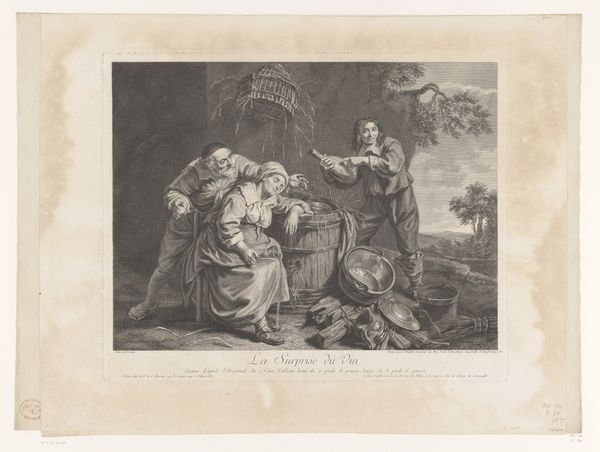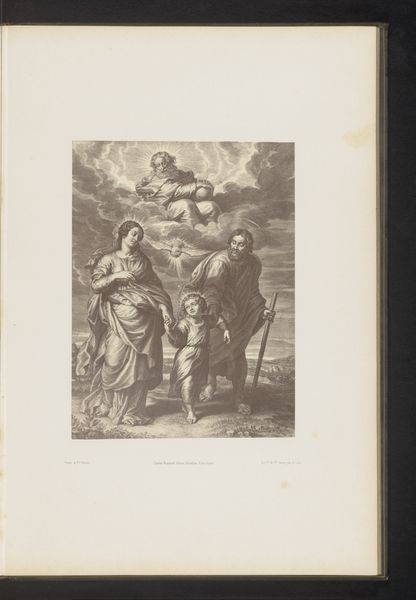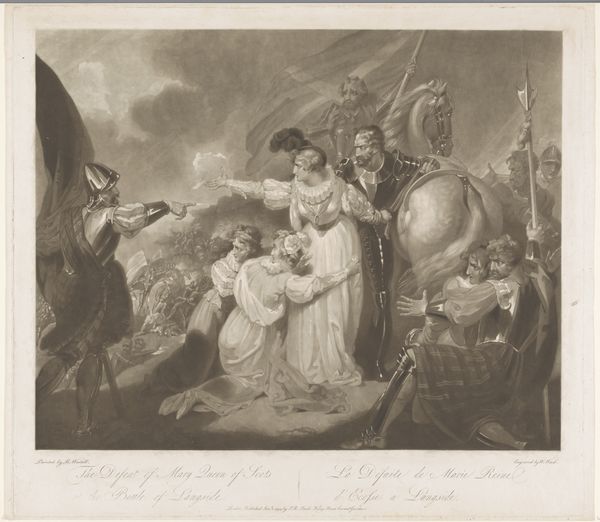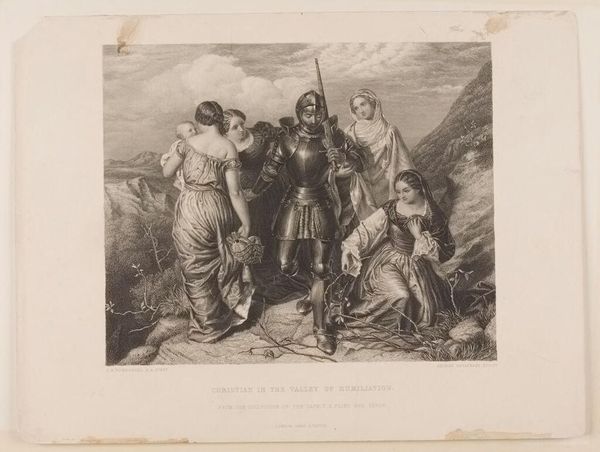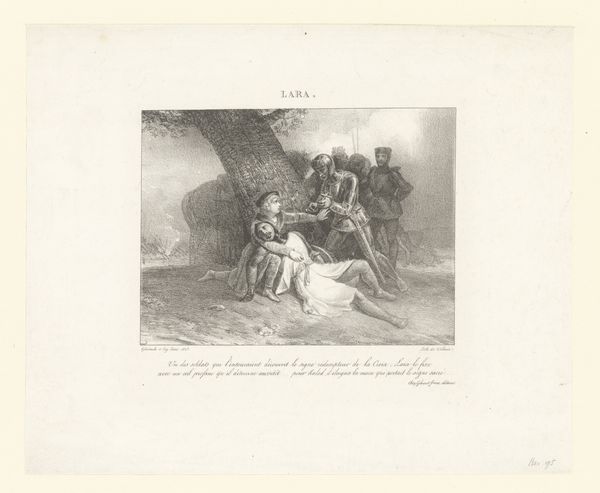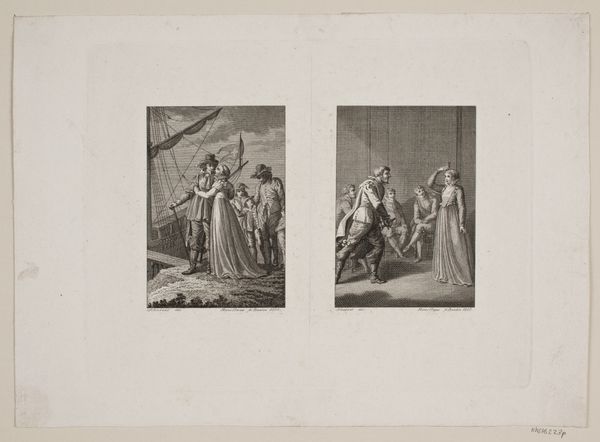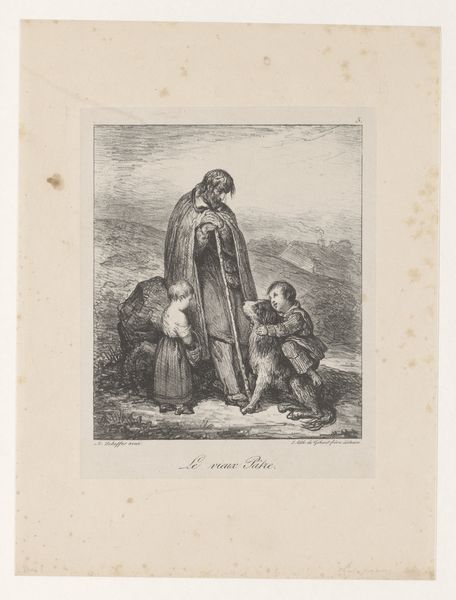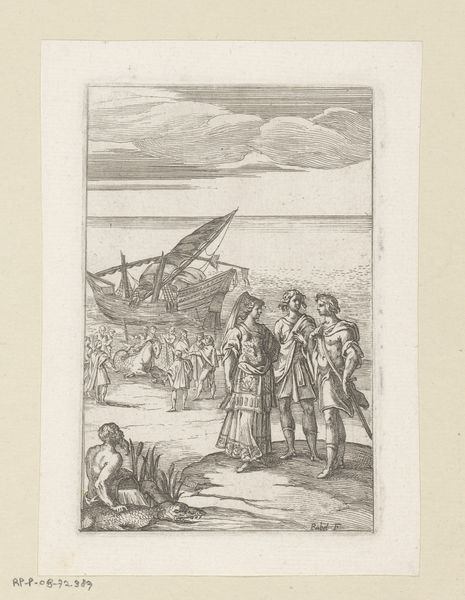
Christus verschijnt bij het Meer van Galilea en stelt Petrus aan als hoofd van zijn kerk 1827 - 1898
0:00
0:00
Dimensions: height 127 mm, width 227 mm
Copyright: Rijks Museum: Open Domain
Editor: This print by Johan George Lodewijk Rieke, titled *Christ Appearing at the Sea of Galilee and Appointing Peter as Head of His Church*, made sometime between 1827 and 1898, possesses a remarkable sense of depth achieved purely through engraving. It evokes a quiet, almost solemn atmosphere. What can you tell me about its place in the history of religious art? Curator: Well, engravings like this one served a critical function in disseminating religious narratives throughout the 19th century. Consider the power dynamics at play: who controlled the imagery, and what messages were being emphasized? Here, we see the visual reinforcement of the Church’s authority. Editor: It's interesting how it translates the idea of authority visually. The figure of Christ bathed in light is quite obvious, but how would this engraving function beyond religious settings? Curator: These prints were affordable, reproducible, and found their way into homes, schools, and even political pamphlets. Romanticism favored intense emotional and spiritual experience; therefore, history paintings depicting dramatic biblical events appealed to bourgeois sensibilities. Consider who might collect these images to legitimize particular views. Editor: So, it's not just a devotional image; it becomes intertwined with broader social and political conversations? Curator: Precisely. The choice of depicting this specific biblical scene – the appointment of Peter – subtly reinforces ideas of succession and legitimate leadership. Who benefits from these ideals and how does its romantic style strengthen their intended effects? Editor: I hadn't thought of it that way, but that’s really illuminating. I'll definitely consider the broader societal impact when I encounter religious art from this era. Curator: Understanding how these images operated within the 19th century media landscape allows for a more complete understanding.
Comments
No comments
Be the first to comment and join the conversation on the ultimate creative platform.


